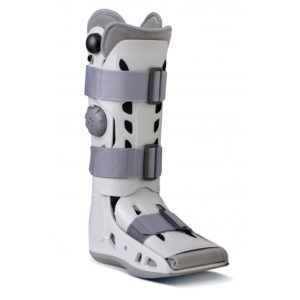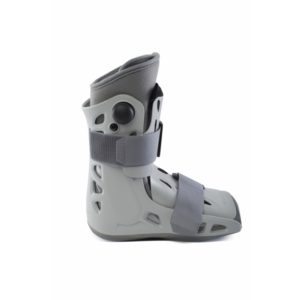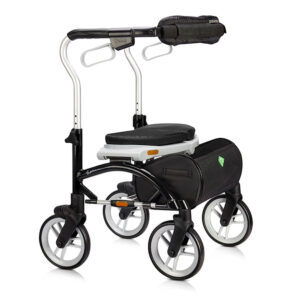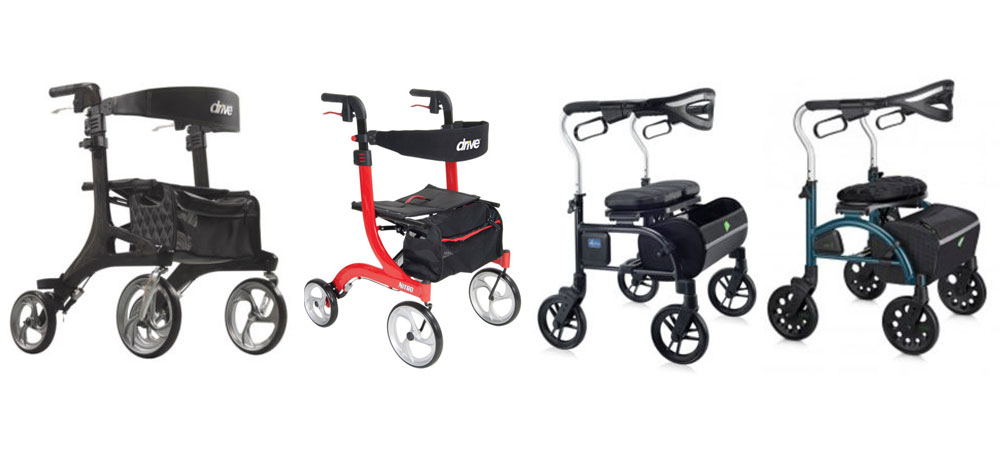When it comes time to choose a walker or rollator, you will have many options to pick from. Not only do walkers and rollators serve different purposes, but they come equipped with a variety of features. As a result, making a definitive choice could be an overwhelming experience. Fortunately, by educating yourself about the basics of walkers and rollators, learning about important features, and consulting with professionals, you’ll be better equipped to choose a mobility aid.
Choosing the Basics of Your Mobility Aid
Choose a walker if you need stability.
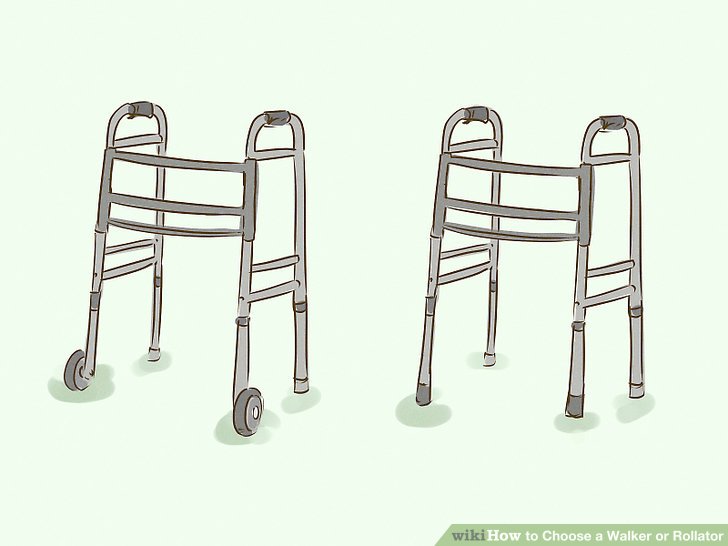
Walkers are a basic form of mobility aid that provides the user with support in moving. Walkers come in many sizes, shapes, and have a wide variety of features. Some may even have wheels, but the wheels won’t generally rotate.
- Walkers most often have aluminum frames, are height adjustable, and require you to lift it to move it. Thus, make sure you have some upper body strength before picking a walker.
- Walkers are best for people who may be unstable and need to rest a lot of weight on the device
Decide on a rollator if you need support standing up.
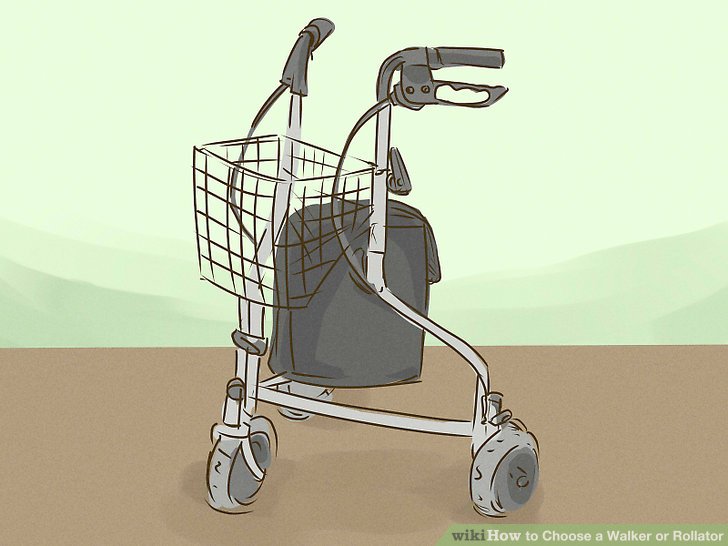
Rollators, like walkers, are mobility devices that aid people with a variety of problems that impact their ability to walk independently. However, rollators are geared toward people with different needs and abilities.
- Rollators are very much like walkers, but have wheels that allow them to be moved without lifting.
- Rollators often have features like a seat bench, basket, or even handbrakes.
- Rollators come with two wheels, three wheels, or four wheels.
- Two-wheeled rollators are good for people who need help with balance and might use it to support a little bit of their weight.
- Three or four wheeled rollators are best for people who need help with balance but won’t rely on it to support their weight.
Pick a knee walker if you have a knee injury or an upper leg injury.
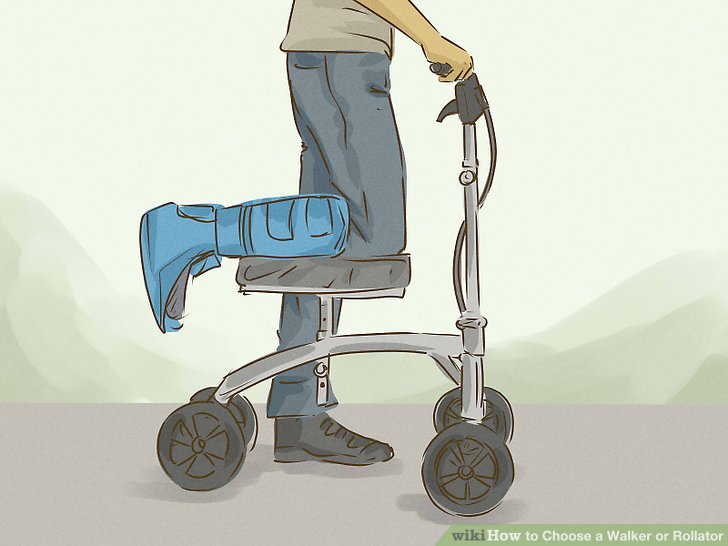
Knee walkers are suited for people who have specific conditions that require them to rest one of their legs. Most people who use knee walkers may only do so temporarily. Knee walkers:
- Look a lot like foot-propelled scooters. As a result, they’ll require users to actively use their non-injured leg.
- Have a seat-like platform for the user to rest their injured knee or leg.
Choose the appropriate size walker or rollator.

When picking a mobility device, you need to make sure it’s the appropriate size for you. If you don’t account for size, you’ll likely wind up with a walker or rollator that doesn’t serve your needs. To fit your walker by checking your:
- Elbow bend, position yourself in the walker and put your arms in a relaxed stance by the grips and allow your elbows to bend at about 15 degrees. Your hands should line up with the grips.
- Wrist height, stand in the walker and allow your arms to hang by your sides. If a walker fits properly, the crease of your wrist should line up with the top of the mobility device’s grip.
Pick a grip.

Grip choice is important as it will help you leverage your weight better. In the end, it will take pressure off your joints and reduce the chance of long-term joint damage. In addition, the grip will help you hold onto your walker or rollator better.
- If you have a condition that might lead you to lose hold of the grip, you may want to pick a rubber grip.
- If you’re concerned about moisture or sweaty hands, think about a plastic grip.
- Foam grips may be more comfortable but could also get dirty and retain moisture.
- Before using a walker, make sure the grip is secure and does not slide.
- A variety of custom grips are available. Contact your mobility aid professional for more options.
Pick a foldable walker if you need to transport it often.
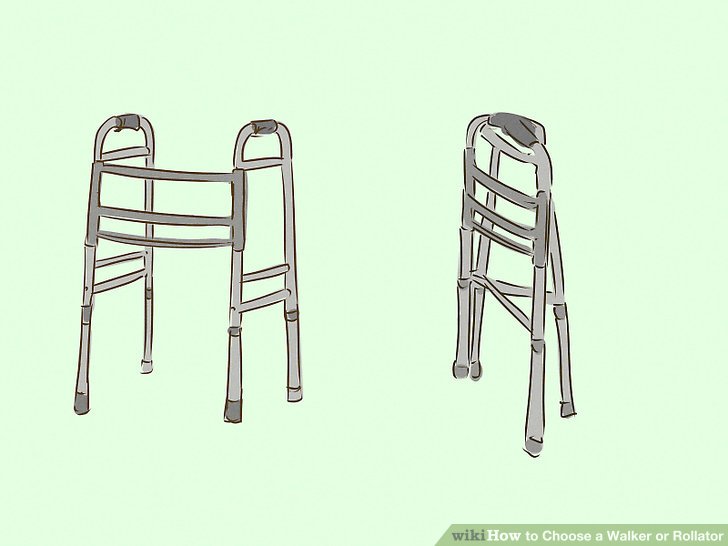
Just as walkers and rollators come in a number of variants, they also come with different levels of portability and foldability. Thus, you should partially pick your mobility device based on whether its portability level will be convenient for you.
- If you don’t plan to leave the home much, a walker or rollator with limited portability might be okay.
- If you plan to be on the go a lot, you should make sure that your walker or rollator can be folded up quickly and into a small enough size for transport.
- Consider the size vehicle you have access to before choosing a walker or rollator.
Article Source:
Article provided by wikiHow, a wiki that is building the world’s largest and highest quality how-to manual. Please edit this article and find author credits at the original wikiHow article on How to Choose a Walker or Rollator.
